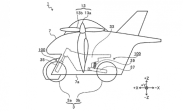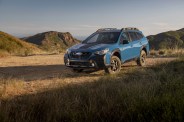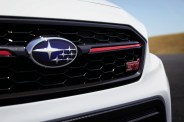Last week, after much anticipation, Subaru unveiled its new Outback Wilderness. It stands to be the most off-road capable Outback yet with 9.5 inches of ground clearance, a beefier long-travel suspension, reconfigured approach and departure angles and a set of grabby Yokohama Geolander all-terrain tires. But that enhanced capability comes with a cost.
The EPA has just published its official fuel economy estimates for the Outback Wilderness — and not too surprisingly, the off-road modifications make the vehicle less fuel-efficient. The Wilderness only comes with the more potent 2.4-liter turbo engine, and it gets 26 mpg on the highway highway compared to the 30 mpg of the standard version, a 13 percent efficiency drop. Why the variation? Blame the off-road tires, which increase resistance (and thus decrease fuel economy).
City numbers, 22 mpg for the Wilderness and 23 mpg for the standard, are more comparable. (For perspective, the base engine Outback earns 26 mpg city and 33 mpg highway.)
The loss in highway efficiency isn’t ideal for what many buyers will use the Outback Wilderness for: going a long way from home to get out into the Wilderness. That said, with a substantial 18.5-gallon fuel tank, the Outback Wilderness will still deliver about 481 miles of theoretical range on the highway.
Despite Subaru’s reputation as a brand for nature lovers, it has been noticeably reticent on developing more fuel-efficient engines. The Evoltis is due to arrive soon, but neither of the brand’s core sellers, the Outback and the Forester, even has a hybrid option, when the rival Toyota RAV4 has multiple.
Fuel inefficiency hasn’t bitten Subaru, an absolute U.S. sales colossus the past decade, yet. But VW took a shot at the Outback in its recent ID.4 ad. And there’s the scary prospect of Rivian cutting into Subaru’s market share with a smaller, more affordable and adventure-tuned EV.



